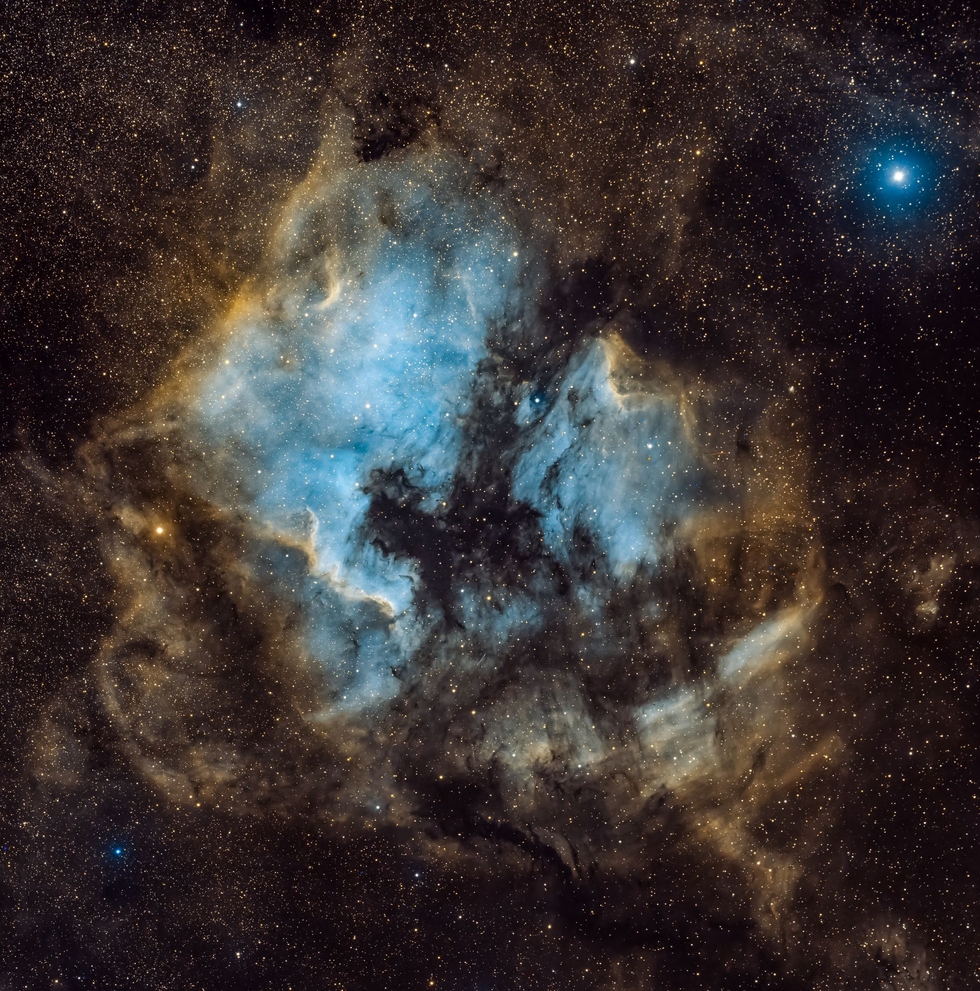North American Nebulae and Pelican
North American Nebulae and Pelican
The North America Nebula (also known as NGC 7000 and C 20) is a nebula in the constellation Cygnus, near Deneb (the tail of the swan and its brightest star). The shape of the nebula draws the North American continent, especially the east coast, between the Gulf of Mexico and Florida.
The discovery of the North America Nebula is attributed to astronomer William Herschel. Together with the nearby Pelican Nebula, it forms a single nebula complex, located about 1960 light years away, in which star formation is active, as evidenced by the presence of several young stellar objects and HH objects; These phenomena mainly concern stars of small and medium mass.
Due to its brightness and extension, it is one of the most photographed objects in the northern celestial hemisphere. The Pelican Nebula (also known as IC 5067/70) is an H II region in the constellation Cygnus, near Deneb (the tail of the swan and its brightest star). It belongs to the same giant molecular cloud as the nearby North America Nebula and is easily photographed. Its distance is estimated to be around 600±50 parsecs (1956±163 light-years).
Star formation phenomena are active inside, as evidenced especially by the presence of HH objects; These phenomena mainly concern low- and medium-mass stars
The discovery of the North America Nebula is attributed to astronomer William Herschel. Together with the nearby Pelican Nebula, it forms a single nebula complex, located about 1960 light years away, in which star formation is active, as evidenced by the presence of several young stellar objects and HH objects; These phenomena mainly concern stars of small and medium mass.
Due to its brightness and extension, it is one of the most photographed objects in the northern celestial hemisphere. The Pelican Nebula (also known as IC 5067/70) is an H II region in the constellation Cygnus, near Deneb (the tail of the swan and its brightest star). It belongs to the same giant molecular cloud as the nearby North America Nebula and is easily photographed. Its distance is estimated to be around 600±50 parsecs (1956±163 light-years).
Star formation phenomena are active inside, as evidenced especially by the presence of HH objects; These phenomena mainly concern low- and medium-mass stars
SPECIFICATIONS
Telescope
SPA-3-CCD
Camera
FLI PL16083
Location
IC ASTRONOMY OBSERVSATORY, SPAIN
Date of observation
02-12-2021
Filters
SHO
Processing
Pixinsight and Photoshop
Credits
Credit Sauro Gaudenzi / Data Telescope Live


